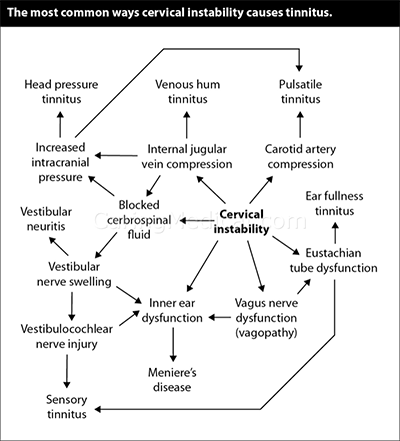 We can’t tell you how often we have random conversations with someone and the topic of tinnitus (or ringing in the ears) comes up! Tinnitus has become a major problem for many people. Tinnitus is a term used to describe sounds in the ear such as ringing, humming, or even a whooshing sound. The sound is typically constant but may occur with certain head movements. Millions of people suffer with this and have tried many modalities, but end up only managing the condition, not curing it, which left untreated, has significant negative impacts on sleep, concentration ability, social activity, mood, and can severely impact people’s lives.
We can’t tell you how often we have random conversations with someone and the topic of tinnitus (or ringing in the ears) comes up! Tinnitus has become a major problem for many people. Tinnitus is a term used to describe sounds in the ear such as ringing, humming, or even a whooshing sound. The sound is typically constant but may occur with certain head movements. Millions of people suffer with this and have tried many modalities, but end up only managing the condition, not curing it, which left untreated, has significant negative impacts on sleep, concentration ability, social activity, mood, and can severely impact people’s lives.
At Caring Medical, we have been successfully treating tinnitus for many years. You may wonder how? We always search for underlying causes of any conditions. The cause? Yup, the neck. Yes, that’s right. The idea that treating cervical (neck) spine instability as a method of treating tinnitus is an idea that we, as well as many researchers and clinicians have had for a long time. Yet, recent research still presents this idea as “novel or new.” In a recent article in The International Tinnitus Journal, Dr. Henk Koning, MD, PhD, stated, “…at the very onset treating cervical spine disorder can result in a reduction of tinnitus.”
In our experience, many patients report ear pain, fullness, and/or sensitivity to sound. Their history includes many visits to ENT, audiologists, and other specialists. Some may receive the diagnosis of Meniere’s Disease. What we have found is that tinnitus may be triggered by instability issues in the neck. Patients often report things like, “I have extreme tinnitus which gets better or worse when I rotate my neck. When I move my head from side to side it gets better. When I move my head up and down it gets worse and then my jaw hurts.” When people report these types of scenarios, it leads you to the cause – cervical instability.
Cervical neck ligaments are the main stabilizing structures of the cervical facet joints in the upper spine and have been implicated as a major source of chronic neck pain. Comprehensive diagnostic testing, including Digital Motion X-ray, can visualize the site of hypermobility that results in the symptom of tinnitus, and other things such as neck pain, headaches, vertigo, brain fog, anxiety, TMJ, and others. The vagus nerve runs down both sides of the neck, close to the cervical vertebrae. Degenerative damage in the neck can impact the function of the vagus nerves and result in sympathetic symptoms such as tinnitus. We contend that the use of comprehensive Prolotherapy appears to be the most effective treatment for chronic neck pain and instability, especially when due to ligament laxity. The technique is safe and relatively non-invasive and presents a non-surgical, in-office option for treating this potentially debilitating condition.



